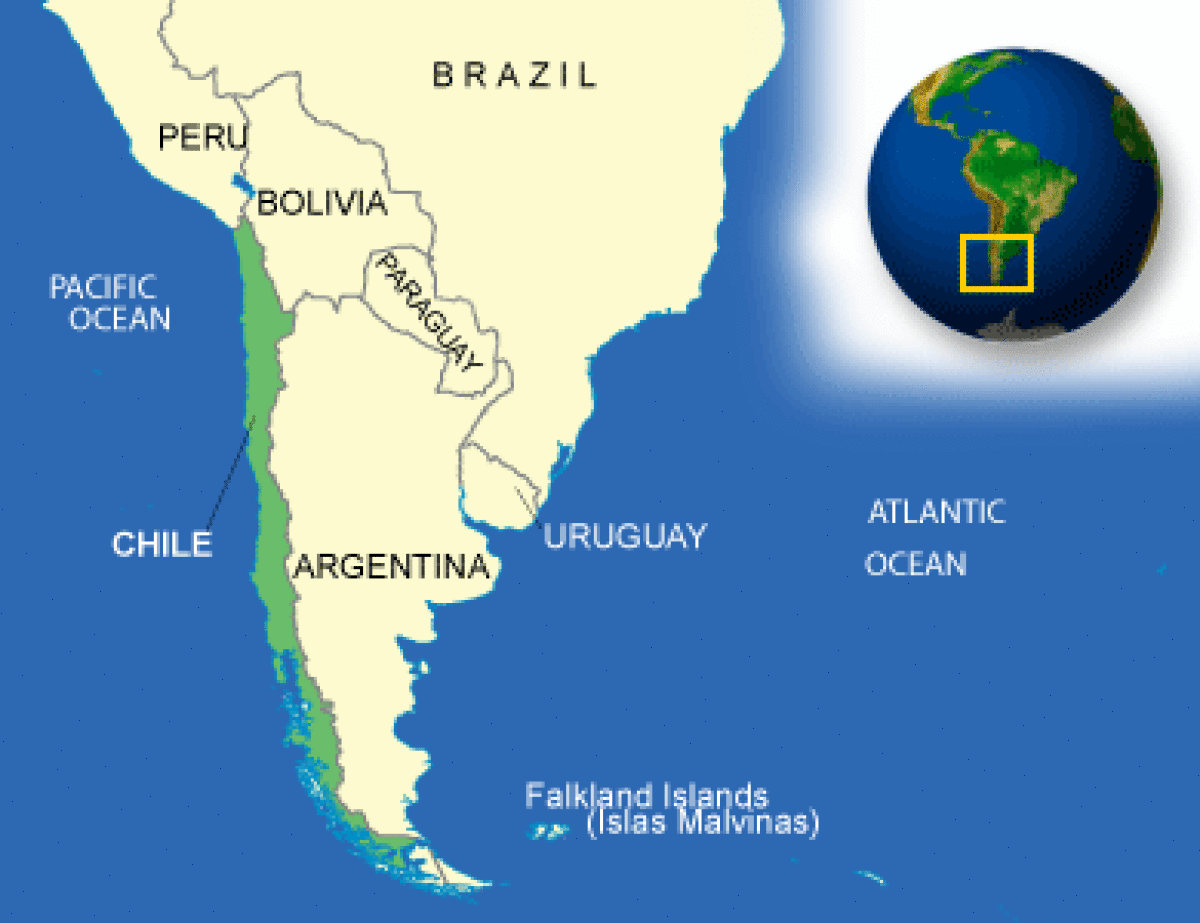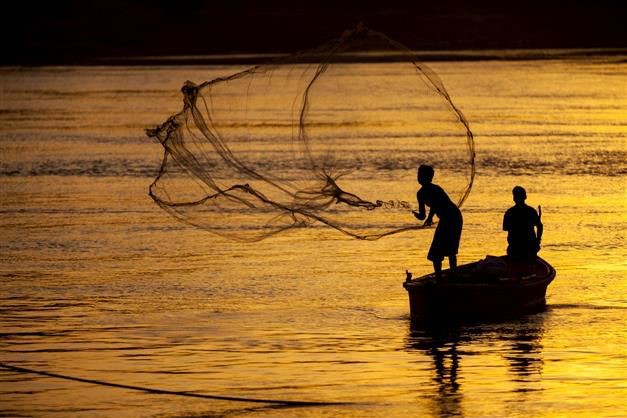
Disclaimer: Copyright infringement not intended.
Context: The recent landslides and extreme weather events in India highlight the urgent need to prepare for and adapt to the increasing impacts of climate change.
Details
What is extreme weather?
It refers to the weather phenomena that are at the extremes of the historical distribution and are rare for a particular place and/or time, especially severe or unseasonal weather.
Extreme weather events
Lightning and storm:
- Lightning is an electrical discharge caused by imbalances between storm clouds and the ground, or within the clouds themselves.
- Storms include dust storms (caused by thunderstorms or strong pressure gradients associated with cyclones that increase wind speed over a wide area), hailstorms (an outgrowth of a severe thunderstorm in which balls or irregularly shaped lumps of ice fall with the rain), thunderstorms and gales (a very strong wind).
Heavy rains, floods and landslides:
- Heavy rainfall happens when a region receives 5-115.5 mm rain in 24 hours.
- In the case of very heavy rainfall, the threshold increases to 115.6-204.4 mm and in extremely heavy rainfall it is 204.5 mm or more.
- The report has considered all very heavy and extremely heavy rainfall events as well as heavy rainfall events only when they have caused damages.
Heatwave:
- These conditions signify a certain rise in temperature at a given place with respect to normal climatological value.
- The report has considered heatwaves (4.5-6.4°C departure of the maximum temperature from normal) and severe heatwaves (departure of more than 6.4°C).
Cold day / coldwave:
- Cold day conditions occur when the maximum temperature drops by 4.5-6.4°C than average. If the deviation is more than 4°C, then it is considered a severe cold day.
- Cold wave conditions occur when the minimum temperature drops by 4.5-6.4°C than normal. Similarly, severe coldwaves occur when the minimum temperature drops by more than 6.4°C than normal.
Snowfall:
- This is a hydrological hazard where a large amount of snow can affect transport, crops and people.
- The Annual Disaster Weather Report by IMD records the snowfall cases over India that caused human deaths. The report has also considered only those snowfall events that caused deaths.
Cloudburst:
- It occurs when there is very heavy rainfall (100 mm per hour) over a localised area. It is accompanied with strong winds and lightning.
Cyclone:
- This phenomenon is defined as intense vortexes or whirls in the atmosphere with very strong winds circulating around them in anti-clockwise direction in the Northern Hemisphere and in clockwise direction in the Southern Hemisphere.
The consequences of extreme weather events
Wildfires
- Heatwaves, which seriously dry out the ground, often trigger virulent wildfires that affect entire communities, destroying homes and damaging health due to smoke inhalation.
- Furthermore, the impact on ecosystems is such that some of them never recover.
Flooding
- The IPCC highlights the high probability that monsoon rainfalls will increase in the medium and long term, especially in South and South-east Asia, causing terrible floods.
- This will have especially serious consequences for coastal cities.
Famines
- Those sectors that depend on a certain degree of climate stability, such as agriculture, are seeing their production and performance levels undermined, thereby generating food insecurity in certain areas.
Climate migrations
- According to Oxfam, more than 20 million people per year are forced to abandon their homes as a consequence of the effects of climate change, which include extreme weather phenomena.
losses of human life and economic ruin
- According to the 2021 Climate Risk Index prepared by the Germanwatch organisation, eight of the ten countries most affected by these phenomena have low-income economies.
- With that in mind, the United Nations Environment Programme (UNEP) estimates that, by 2030, adapting to climate change and tackling the damages it will cause will cost developing countries between 140 and 300 billion dollars a year.
- What's more, these events also affect ecosystem biodiversity, putting numerous species under threat.
Climate change and extreme weather events
- The Intergovernmental Panel on Climate Change (IPCC) in its most recent report, in August 2021, pointed that the reason for extreme weather events is climate change.
- It also blamed humankind for the increase of greenhouse gas (GHG) emissions which, in turn, are partly responsible for the rise of temperatures worldwide.
- It warns that if CO2 emissions are not reduced over the next few decades, the increase of temperatures on a worldwide level will exceed the threshold established in the Paris Agreement.
- As a result, extreme weather phenomena will continue being more widespread, the Arctic icecap will shrink — for example, ice floes and glaciers — sea levels will rise and the loss of biodiversity will be inevitable.
Examples of extreme weather events world wide
- Wildfires that devastated the eastern Mediterranean.
- The Zhengzhou storm: On 19 July of 2021 the equivalent of one year's rain fell in a single day, forcing the evacuation of around 200,000 people.
- Floods in western Germany: The continuous rains that fell on this region of the country in July 2021, especially in North Rhein-Westphalia — its most populous State — and in Rheinland-Palatinate, left a swath of destruction and hundreds of people dead and missing.
- North American heatwave: More than 1,200 daytime and 1,500 night-time high temperature records were broken in different US and Canadian cities between 24 and 30 June of 2021, according to the National Oceanic and Atmospheric Administration (NOAA), caused by a heatwave. This phenomenon was followed by a terrible succession of wildfires.
- Drought in Siberia: In 2021 one of the world's coldest regions experienced its driest summer of the last 150 years according to the Russian authorities. This resulted in a record number of wildfires and, in particular, in an unstoppable mega-wildfire that consumed over a million and a half hectares.
Indian context
- In 2022, extreme weather events cumulatively claimed 3,026 human lives, affected at least 1.96 million hectares (ha) crop area, destroyed 423,249 houses and killed over 69,899 animals.
- Wayanad faced devastating landslides in July 30, 2024.
India’s preparedness to deal with natural disasters
- Research suggests that developing countries such as India are focused more on relief and rehabilitation rather than on disaster preparedness.
- Despite the presence of improved early warning systems and disaster management authorities at the district, state, and national levels, India often fails in timely disaster preparedness and disaster risk reduction.
- Although the Kerala government is praised for the control and management of the Covid-19 pandemic and other public health situations over the years, it has failed to recognise the warning signs that have been flagged in earlier reports.
- At a time when the affected areas are reeling from the severe effects of the disaster, authorities at the Centre and in the state have been trading charges and allegations against each other.
Measures to Tackle Extreme Weather Events in India
- India Meteorological Department (IMD) provides early warning services related to severe weather events to support public welfare and disaster management related to Natural Hazards.
- The short to medium range forecast and warning at district and station level are issued by state level Meteorological Centres (MCs)/Regional Meteorological Centres (RMCs).
- IMD is issuing Impact Based Forecast (IBF) which give details of what the weather will do rather than what the weather will be.
- IMD has launched seven of its services (Current Weather, Nowcast, City Forecast, Rainfall Information, Tourism Forecast, Warnings and Cyclone) with 'UMANG' mobile App for use by public.
- IMD had developed mobile App 'MAUSAM' for weather forecasting, 'Megbdoot' for Agromet advisory dissemination and 'Damini' for lightning alert.
- IMD is also implementing Common Alert Protocol (CAP) developed by NDMA for dissemination of Severe Weather Warning.
- Thirty three Doppler Weather Radars (DWRs) are operational across the country with 4 DWRs commissioned in January 2022 at New Delhi, Leh, Mumbai and Chennai.
- Multi-Mission Meteorological Data Receiving & Processing System has been established and dedicated to the nation for augmentation of satellite derived products.
- New raingauge stations are being added in the District-wise Rainfall Monitoring Scheme to increase the rainfall monitoring network.
- Location specific forecast for 7 days and now cast for next 3 hours have been extended to 1164 and 1089 stations respectively covering 739 districts in the country.
- In order to cater to the needs of Cyclone Warning Services and Marine weather services, there are seven established Warning Centres covering the east & west coasts of our country.
- Indian National Centre for Ocean Information Services (INCOIS) is providing early warning services for Tsunami, storm & Swell surges and high waves for entire coastal areas of the country.
Way forward
- Regulation: Regulations should be strictly followed in the development planning for ecologically sensitive areas, properly taking into account environmental impact assessments, and the ecological footprints of projects.
- Ecotourism: Both places where the recent disasters took place see mass tourism and a wide range of economic activities around it. ‘Ecotourism’ is suggested as an alternative; however, critics point out that even though ecotourism strives to combine conservation and development, it often ends up exacerbating the existing pressures on the environment. Alternative livelihood opportunities should be provided in fragile ecosystems, reducing the dependence on tourism.
- Automated weather stations should be established under each gram panchayat and urban local bodies to ensure timely evacuation and quick response to disasters.
Land Slides: https://www.iasgyan.in/daily-current-affairs/wayanad-landslides#:~:text=Causes%20of%20Landslides,the%20structure%20of%20the%20land
Cloud Burst: https://www.iasgyan.in/ig-uploads/pdf/Cloudburst.pdf
Notified Disaster: https://www.iasgyan.in/daily-current-affairs/notified-disasters-8
Source
https://www.ncbi.nlm.nih.gov/books/NBK45750/
https://www.iberdrola.com/sustainability/extreme-weather-events
https://www.accessscience.com/content/article/a249370
https://www.downtoearth.org.in/natural-disasters/3-026-people-2-million-ha-crops-how-314-days-of-extreme-weather-events-affected-india-in-2022-87181
https://sansad.in/getFile/annex/256/AU976.pdf?source=pqars
|
PRACTICE QUESTIONS
Q. Highlight the impact of climate change on extreme weather events. Also, highlight the measures that need to be taken in order to enhance our preparedness to deal with these eve
|













.jpg)


